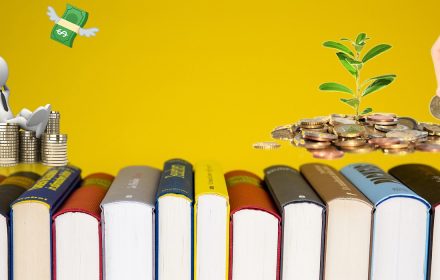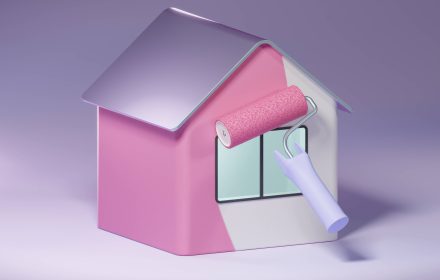Investments are a powerful tool for multiplying capital and achieving financial freedom, but for many, they seem like a complex and inaccessible world. In reality, becoming a professional in the field is within the reach of anyone who is willing to learn and act strategically. In this article, we will break down the key steps and provide practical advice for beginners that will help you confidently start on the path to financial well-being. Let’s delve into the topic so you can learn how to become a successful investor.
When to Start Investing
The market does not wait for readiness—it moves. Starting at the earliest opportunities accelerates capital growth. Even 5000 rubles per month, invested according to a long-term investment strategy, make a noticeable difference. With a 10% annual return, after 20 years, the account will reach ≈ 380,000 rubles. Waiting for the “right moment” will not lead to anything good.

In practice: investors who start at 25 reach financial freedom on average 8 years earlier than those who wait for the “best conditions.”
How to Start Investing
The minimum start is to open a brokerage account, choose simple instruments. No loans, no leverage. Using index funds and bonds is not a sign of cowardice, but a survival strategy.
For beginners, it is better to start investing in understandable and proven instruments: exchange-traded funds on the S&P 500 index, federal loan bonds, securities of stable companies from the top tier. Examples include FinEx FXRL, OFZ-PD with a profit of 11% per annum, shares of Sberbank and Yandex.
How to Become a Successful Investor and Not Fear Investing
The market only scares with ignorance. Stock market dynamics are a set of regularities, not chaotic gambling. Studying statistics, price behavior models, correlations with economic cycles replaces fear with confidence.
Understand the basics: how the stock market works, the difference between stocks and bonds, the risks associated with trading and real estate investments.
Example: the Moscow Exchange index grew from 1000 points in 2014 to 3200 in 2021—despite all fluctuations, investors received a return of over 15% per annum.
Investment Strategies: What Will Help You Become a Successful Investor
A properly structured system of actions simplifies decision-making. Using stable investment models reduces the influence of emotions.
A detailed list of effective strategies:
- Long-term investing—buying reliable assets with a horizon of 5 years or more. Examples: Berkshire Hathaway, federal loan bonds, dividend stocks.
- Portfolio diversification—allocating investments among stocks, bonds, real estate, and currency. Risk is reduced when individual markets decline.
- Reinvesting profits—investing received dividends and coupons exponentially increases capital.
- Cutting losses—using stop-losses and clear exit rules.
- Volatility control—selecting assets with moderate price fluctuations.
- Assessing the risk-return ratio—investing in assets with expected profits exceeding possible losses.
These approaches are used by hedge funds, private banks, and experienced traders, minimizing drawdowns and increasing portfolio stability.
How to Preserve Capital During Market Declines
Panic nullifies not the market, but thinking. When quotes fall, the value of composure increases. Using protective instruments is key to preserving funds. For example, gold, short-term bonds, ETFs on the VIX (volatility index) act as a portfolio “insurance.”
During the 2020 crisis, the S&P 500 index lost 34% in a month, but protective assets like TLT (US bonds) grew by 20%. Such imbalance helps manage assets even in chaotic conditions.
Real Estate Investments: A Stable Asset Outside the Stock Market
Investing in square meters is an excellent addition to a stock portfolio. Rental income, protection against inflation, independence from quotes. Investments in apartments in Sochi, Krasnodar, St. Petersburg bring financial results of 6–9% per annum with stable demand.
By 2024, the average yield for renting studios in Moscow is 8.4%, with property price growth within 12% over the last two years.
Stock Investments: Participation in Business, Not Just Purchase
Choosing stocks requires understanding the business. Buying not just papers, but shares. Profit growth comes from selecting companies with stable cash flow, low debt, and profit growth.
Example: over 10 years, Lukoil’s shares increased in value by 420%, while the company annually paid dividends at a rate of 9–12%.
Trading Investments: Short-Term Deals Under Control
Trading stocks is not an alternative to investments but a separate sphere. A speculator uses technical analysis, manages risks, but does not forecast long-term economics.
A successful trader adheres to clear loss limits, keeps a trade journal, evaluates asset liquidity. For example, intraday trading includes futures on the RTS index, Gazprom shares, high-volume currency pairs. Without an algorithm and control, such deals are unprofitable.
How Often to Review Your Investment Portfolio
Excessive control destroys the strategy. Checking the investment portfolio is not morning exercise but a management tool. The optimal frequency is quarterly. This approach allows timely identification of deviations, risk assessment, and structure adjustments.
Example: changing the share of stocks in the portfolio when their value increases by 30% without rebalancing increases overall risk. Regular review restores balance, maintaining the initial strategy and profitability.
Yield: How to Calculate and Choose Correctly
Evaluating profit without considering risk is a game of roulette. High profitability with excessive volatility devalues the result. The Sharpe ratio helps compare investments based on this parameter.
Example: portfolio yield—12%, risk—8%, Sharpe ratio ≈1.5. Another asset with a return coefficient of 15% but a risk of 20% is less profitable upon objective evaluation.
The market rewards not boldness but accuracy. This is how becoming a successful investor ceases to be a mystery and becomes the result of systematic discipline.
How to Become a Successful Investor: The Main Points
Continuous learning, accepting mistakes, discipline, and control are the only stable elements.

What shapes the result:
- Starting without delays;
- Clear financial goal;
- Strategy over improvisation;
- Diversification, not betting on one;
- Analytics, not intuition;
- Calmness during crises.
Focus on these key principles to lay a solid foundation for your financial well-being.
 en
en  de
de  ar
ar  es
es  nl
nl  hi
hi  fr
fr  it
it  pt
pt  el
el 










